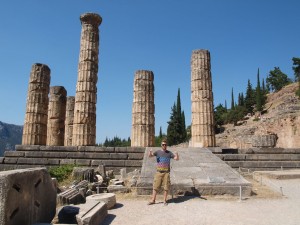Holidays in Greece need not be boozy affairs that never stray more than a hundred yards from the beach. This is after all the birthplace of democracy, revolutionary architecture and some of the most important works of art and literature in the world. While you might not be ready to abandon the beach – or the booze – here are the top three sites that anyone, from lovers of history to just plain old lovers, should see on their Greek holidays.
1) The Acropolis. So we haven’t strayed too far from your expectations, but there are good reasons why this collection of buildings over Athens makes most ‘must-see’ lists; namely that they hark back to a time when the foundations of what we know as Western civilization were set down. For one, there was the experiment with that crazy form of government we call democracy, not to mention Athenian discoveries in science, as well as the rich philosophical ideas they set forth which still influences how we think today. This collection of buildings called the Acropolis includes the Parthenon and the Temple to Athena Nike, all completed during the fifth century BC.
2) Olympia. Here we have a word that’s very much a part of our lexicon. It’s where the first Olympic Games were held in 776 BC and continued to be held every four years for centuries. At Olympia, you can see where one of the wonders of the ancient world stood – the Statue of Zeus – as well as the temple to Hera, the wife of Zeus. You’ll see the remains of a studio where one of the ancient world’s most gifted sculptors, Pheidias, worked (he made the Zeus statue) and the remains of the Olympic Stadium, with its surrounding banked hillsides where spectators watched the action.
3) Delphi. Delphi is home to Greece’s most famous oracle, the Pythia. The Pythia was the priestess at the Temple of Apollo at Delphi who would make predictions or prophesies with her supernatural power, which she was given by the god, Apollo. Remnants of the temple of Apollo are still there today, as well as other buildings that made up the city, which, in the 8th-6th centuries BC, wielded a great deal of power.
